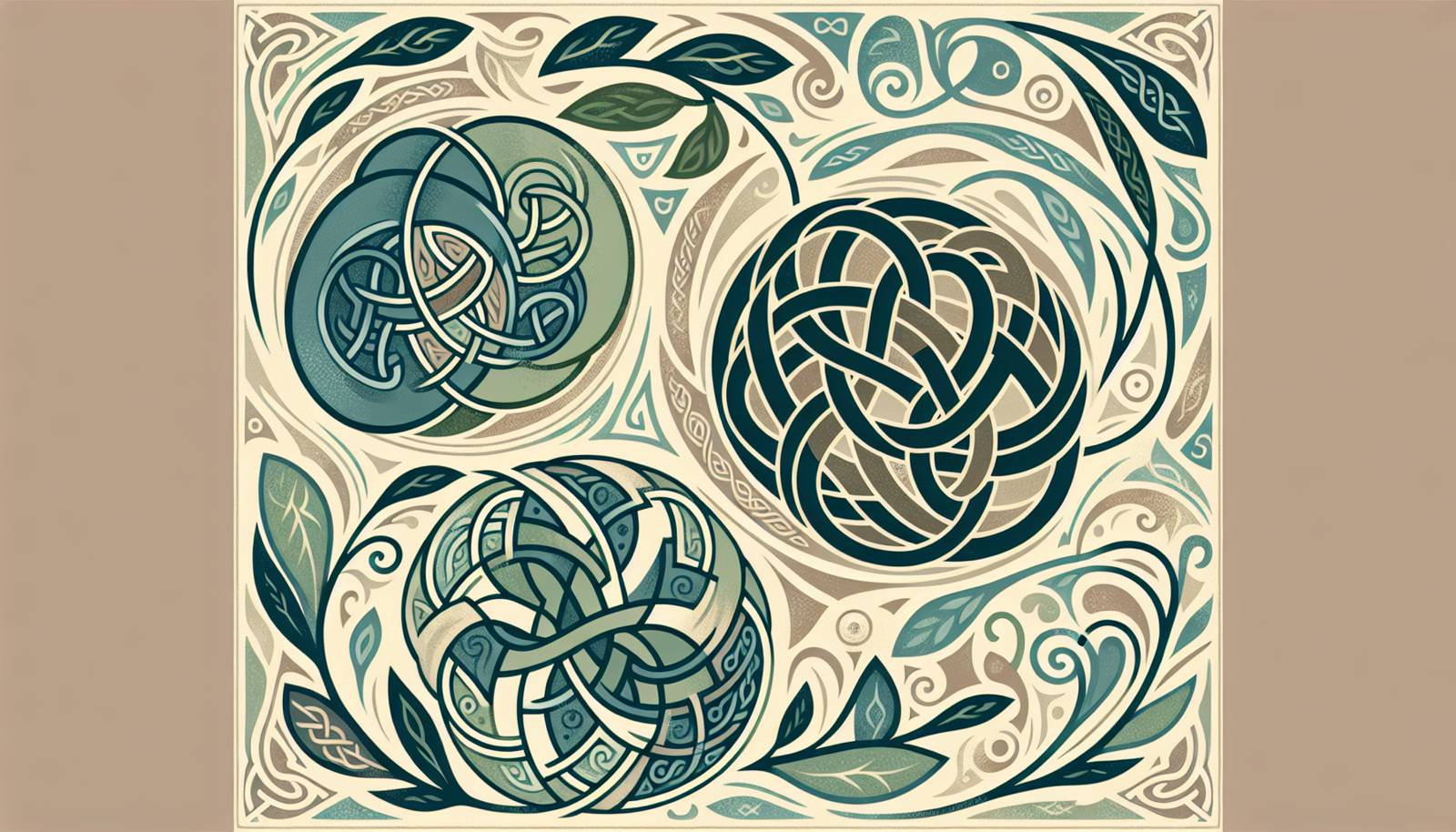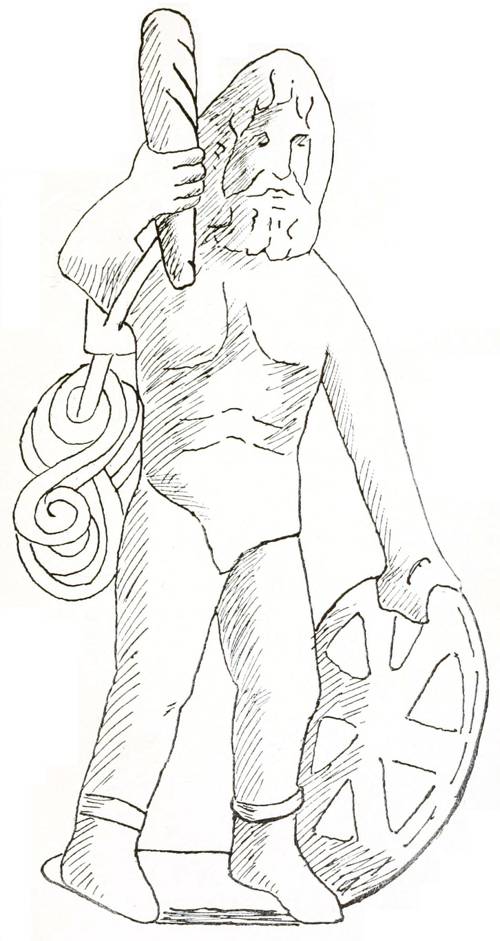
FAQ About Influence of Celtic Mythology on Modern Media

What is Celtic mythology?
Celtic mythology refers to the myths and legends told by the ancient Celtic people, who lived across various parts of Europe including Ireland, Scotland, Wales, and Brittany. It is characterized by its rich narratives about gods, goddesses, heroes, and mystical creatures. Central themes often include the Otherworld, epic battles, and transformations.

How has Celtic mythology influenced modern literature?
Celtic mythology has profoundly impacted modern literature, providing themes, symbols, and motifs that authors use to enrich their storytelling. Authors like J.R.R. Tolkien have incorporated elements such as magical landscapes and heroic quests drawn from Celtic narratives. These mythical elements often serve to bridge historical traditions with contemporary narratives.

Can you name some films influenced by Celtic mythology?
Several films draw inspiration from Celtic mythology, including The Secret of Kells, which explores Irish mythology and folklore. Another example is Brave, by Pixar, which while not directly adapting myths, incorporates aspects of Celtic culture and symbolism extensively in its narrative and visuals.

Are there video games based on Celtic mythology?
Yes, numerous video games incorporate elements of Celtic mythology. A notable example is Hellblade: Senua's Sacrifice, which weaves in elements of Celtic and Norse myth to create a rich narrative driven experience. Another example is The Bard's Tale series, which uses a backdrop heavily inspired by Celtic myths and culture.

What are common themes from Celtic mythology seen in modern media?
Common themes from Celtic mythology that appear in modern media include the hero’s journey, mystical lands and landscapes, encounters with otherworldly beings, and elements of magic and transformation. These themes help create rich tapestries of fantasy and mythos in various media forms, from literature to video games.

Why do creators find Celtic mythology appealing for modern storytelling?
Creators find Celtic mythology appealing due to its rich tapestry of complex characters, mystical landscapes, and universal themes that resonate across cultures and time periods. Its ambiguity and depth provide a flexible framework for storytelling, allowing for innovative interpretations and adaptations while maintaining roots in ancient traditions.

What modern novels are influenced by Celtic mythology?
Many modern novels draw inspiration from Celtic mythology. Some examples include The Mabinogion Tetralogy by Evangeline Walton, which reimagines stories from Welsh mythology, and Juliet Marillier's Sevenwaters series, which weaves Irish mythological elements into its narratives. These works re-explore mythic themes through contemporary lenses, offering fresh directions for stories rooted in ancient culture.

How do modern depictions of druids differ from ancient Celtic times?
Modern depictions of druids often romanticize them as mystical, wise figures, channeling magic and nature worship. Ancient Celts likely saw druids as a distinct and powerful social class responsible for spiritual guidance and rituals. Over time, media portrayals have enhanced these figures with attributes appealing to contemporary fantasy narratives.

Is there a particular Celtic creature frequently adapted in modern media?
Yes, one frequently adapted creature from Celtic mythology is the Banshee. In traditional lore, the Banshee is a harbinger of death, often depicted as a wailing spirit. Modern media often interpret and reimagine the Banshee in numerous creative ways, appearing in novels, films, and television with varying characteristics.

What are some misconceptions about Celtic mythology in modern media?
One common misconception is the homogenization of Celtic cultures, often combining Irish, Scottish, and Welsh myths despite their distinct cultural origins. Another is the portrayal of druids and mystical elements as uniformly magical or evil without acknowledging the cultural and historical complexities involved in their original stories.

How have Celtic goddesses been represented in modern media?
Celtic goddesses in modern media are often depicted as powerful, enigmatic figures, symbolizing nature, war, and sovereignty. For example, the figure of Morrigan, a goddess associated with fate and battle, appears in various media formats as a strong, multi-dimensional character, reflecting both the ancient attributes and modern interpretations.

What role does the Celtic Otherworld play in contemporary storytelling?
The Celtic Otherworld, often seen as a paradise-like realm or the home of gods and spirits, frequently appears in contemporary storytelling as a mysterious, enchanted space. It serves as a setting for adventures and symbolizes themes of life, death, and rebirth, providing fertile ground for creative narratives in both literature and film.

How do modern video games incorporate Celtic myths?
Modern video games incorporate Celtic myths by integrating thematic elements such as mythical creatures, landscapes that reflect Celtic environments, and narrative quests reminiscent of ancient myths. Games often create immersive worlds where players can engage with stories, characters, and challenges inspired by Celtic lore, contributing to dynamic gaming experiences.

Are there any comics or graphic novels inspired by Celtic mythology?
Yes, Celtic mythology has inspired several comics and graphic novels. For instance, Celtic Fairy Tales by John D. Batten graphic novels retell classic Irish and Scottish stories. These works often blend stunning artwork with mythological narratives, bringing legendary tales to life in new, visually captivating ways.

What impact does Celtic mythology have on modern fantasy genres?
Celtic mythology has significantly influenced the fantasy genre, contributing foundational elements like mystical settings, complex character archetypes, and thematic richness. Its integration offers depth and authenticity, fostering expansive worlds in fantasy narratives that captivate audiences with a blend of enchantment and historical tradition.

How has the perception of Celtic warriors evolved in modern media?
The perception of Celtic warriors in modern media has evolved from historical accounts of fierce tribal fighters to more nuanced portrayals emphasizing bravery, heroism, and mythical prowess. Films and games often depict them as iconic figures embodying warrior spirit, reflecting both historical inspiration and creative reinterpretation.

What is the significance of Celtic symbols in modern media?
Celtic symbols, such as the triskele or Celtic knots, hold significant aesthetic and thematic value in modern media. They are often used as motifs that invoke themes of eternity, spiritual connection, and balance. These symbols enrich the visual and narrative complexities of media works, offering layers of cultural meaning.

Why do fantasy stories frequently use Celtic settings and themes?
Fantasy stories frequently use Celtic settings and themes due to their inherent mystical qualities, rich natural imagery, and deep-rooted mythological associations. These elements resonate with the core components of fantasy, such as magic and epic journeys, making Celtic influences ideal for creating immersive and engaging story worlds.

How have Celtic rituals been adapted in films and games?
Celtic rituals have been adapted in films and games to create authentic atmospheres or narrative depth. These adaptations might portray ancient Druidic ceremonies or seasonal celebrations, which are reimagined with creative liberties, adding layers of drama and mystique that enhance the narrative appeal for modern audiences.

What challenges do creators face when using Celtic mythology in their work?
Creators face challenges such as maintaining cultural authenticity, avoiding stereotypes, and ensuring respectful representation when using Celtic mythology. Balancing historical accuracy with creative expression is also crucial, as is distinguishing among the diverse Celtic traditions without conflating them. These challenges necessitate careful research and culturally sensitive storytelling approaches.
